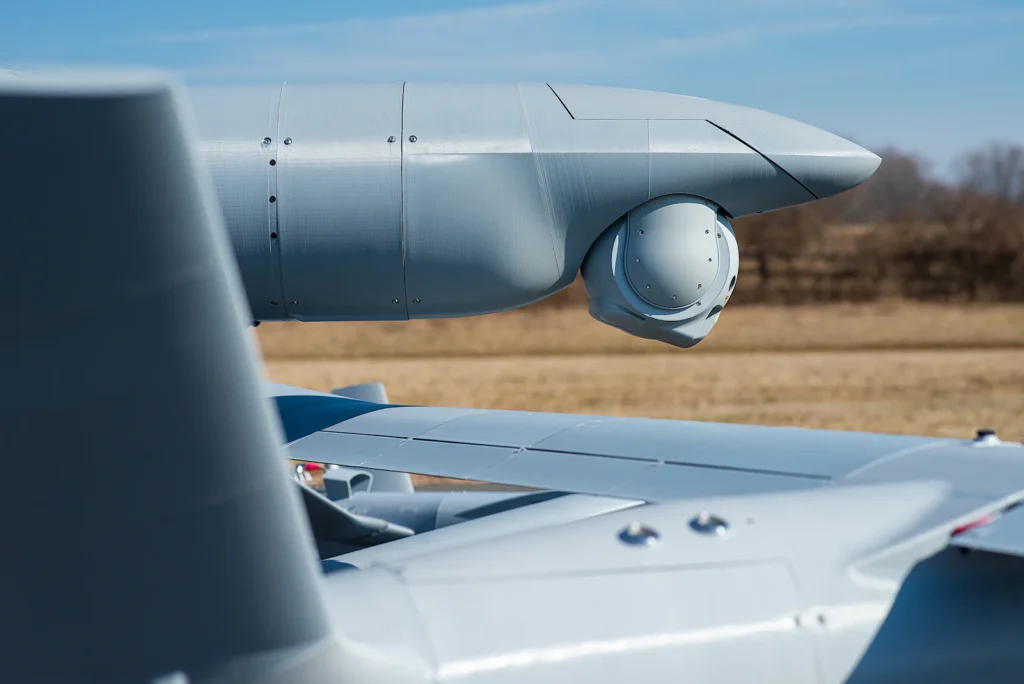Russia’s invasion of Ukraine highlighted the effectiveness of small, inexpensive drones in destroying armored vehicles. Meanwhile, larger drones such as the Turkish Bayraktar played a crucial role in halting the invasion. Over the past two years, drone innovation in Ukraine has intensified, with low-cost Iranian loitering munitions and domestically produced drones significantly impacting both distant and nearby targets. Drones are now used across a wide price range, from $300 to $30 million. Increasingly, it appears that the high-cost US Predator drones are being overlooked in favor of more affordable, rapidly iterated systems. In our Drone Swarms series, we delve deeply into the evolution of drone technology, including drone boats and customized drones. Overall, the industry is experiencing explosive growth, turning to 3D printing to bridge a gap and secure a new, war-winning capability.
RapidFlight is positioning itself among the companies vying for drone supremacy. The company is collaborating with the US government on the Replicator initiative, which focuses on the agile and rapid production of autonomous vehicles. RapidFlight demonstrated its capabilities at the Technology Readiness Experimentation 2023 (TREX23-2) at Camp Atterbury. Building on this success, they aim to showcase their ability to rapidly mass-produce drones. Their unmanned aerial systems (UAS) are designed to be cost-effective and long-range, with payloads that provide significant utility.
The company’s goal is to manufacture drones within a six-week lead time. While this may seem lengthy compared to current lead times in Ukraine, it could be considered rapid within an American context. The company aims to reduce costs by 80% compared to existing platforms. However, if this cost reduction is relative to US drones, including the less expensive models, it could still be more costly than the $10,000 and $20,000 drones currently used for strikes thousands of miles away in Ukraine. The drones are designed for a variety of mission sets, including intelligence delivery, bombing, and electronic warfare.
“RapidFlight exists to enable the DoD and its allies to flexibly respond to urgent and evolving threats posed by strategic global competitors. Our technology stack, ready for full commercial deployment, enables mission-customizable drone design, scalability, build-anywhere manufacturing, shorter design-to-delivery time, and reduced system costs by up to 80 percent versus existing solutions,” said Mike Uffelman, RapidFlight’s director of customer programs.
The firm’s drones are versatile, capable of operating on electric, gas, and other fuels. The company has developed its proprietary methodology, AgileAviation, to enable rapid development and iteration. While the vision is promising, there are concerns about its pace and cost, particularly when compared to Iranian and Ukrainian alternatives. Although it represents an improvement over traditional contractor speeds, it still falls short of the urgent “war speed” at which Ukraine is currently operating. The US could benefit from this technology, but it would need to be even faster and more cost-effective to meet the immediate demands of wartime conditions.
To me, the future of war involves automating drone production through the use of 3D printing and robotics to assemble and manufacture up to 95% of the vehicle, complemented by lithography-derived chips for additional functionalities. This would enable production near the front lines, closely aligned with the time and place of need. Notably, RapidFlight utilizes Fusion3 material extrusion systems, which are sophisticated, multi-zone heating enclosed systems. Fusion3’s systems are made in the USA, an important factor for security-sensitive applications. Given the security considerations, alternatives like Bambu Labs might not be suitable. For those requiring US-based production, systems like Fusion3 and Filament Innovations represent viable options. The availability of high-end and medium material extrusion systems manufactured in the US could present a significant opportunity, leveraging the country’s capacity to drive sales for these systems.
At the same time, the firm could opt for high-end systems like those from Stratasys or select entry-level models priced around $300. However, they have chosen a $5,000 printer, which represents a middle ground between these extremes. This decision opens up significant opportunities for Markforged and other US suppliers as well. Given the requirement for strong materials, an enclosed printer with robust heat management is essential. A price point around $5,000 could indeed be an optimal choice for these systems, making it an exciting segment for US-based manufacturers to explore. The growing demand for drones could significantly drive sales of industrial 3D printers in the coming years, so this is certainly an area to watch.
Subscribe to Our Email Newsletter
Stay up-to-date on all the latest news from the 3D printing industry and receive information and offers from third party vendors.
Print Services
Upload your 3D Models and get them printed quickly and efficiently.
You May Also Like
Heating Up: 3D Systems’ Scott Green Discusses 3D Printing’s Potential in the Data Center Industry
The relentless rise of NVIDIA, the steadily increasing pledges of major private and public investments in national infrastructure projects around the world, and the general cultural obsession with AI have...
3DPOD 260: John Hart on VulcanForms, MIT, Desktop Metal and More
John Hart is a Professor at MIT; he´s also the director of the Laboratory for Manufacturing and Productivity as well as the director of the Center for Advanced Production Technologies....
Etsy Design Rule Change Reduces Selection of 3D Printed Goods
Online marketplace Etsy has implemented a rule change requiring all 3D printed goods on the site to be original designs. The update to the site’s Creativity Standards states, ¨Items produced using...
E-Beam OEM Wayland Additive Partners with USC Racing to 3D Print Titanium Exhaust Collector
Every year, standards organization SAE International holds a competition called Formula SAE, in which students from both undergraduate and graduate programs design, build, and race small formula-style race cars. For...



































